Home distillation
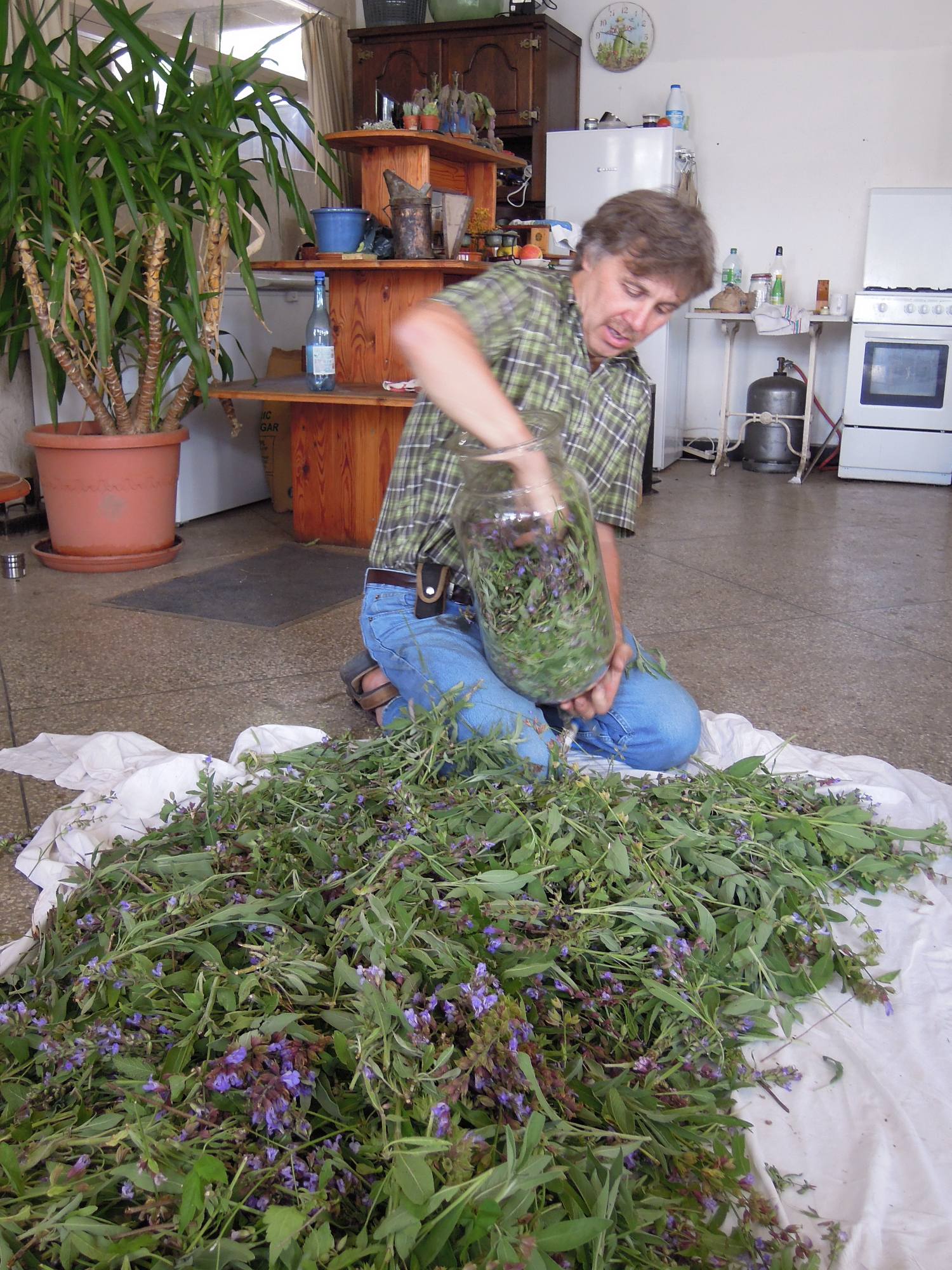
Some images of homedistilling, season
2012. I'm filling my glass distiller (10 liter=3 kg maximum) with sage.
You need to press the fresh herbs strong enough,
in order to prevent steam "chimneys" to appear, which leads to bad distillation.
in order to prevent steam "chimneys" to appear, which leads to bad distillation.
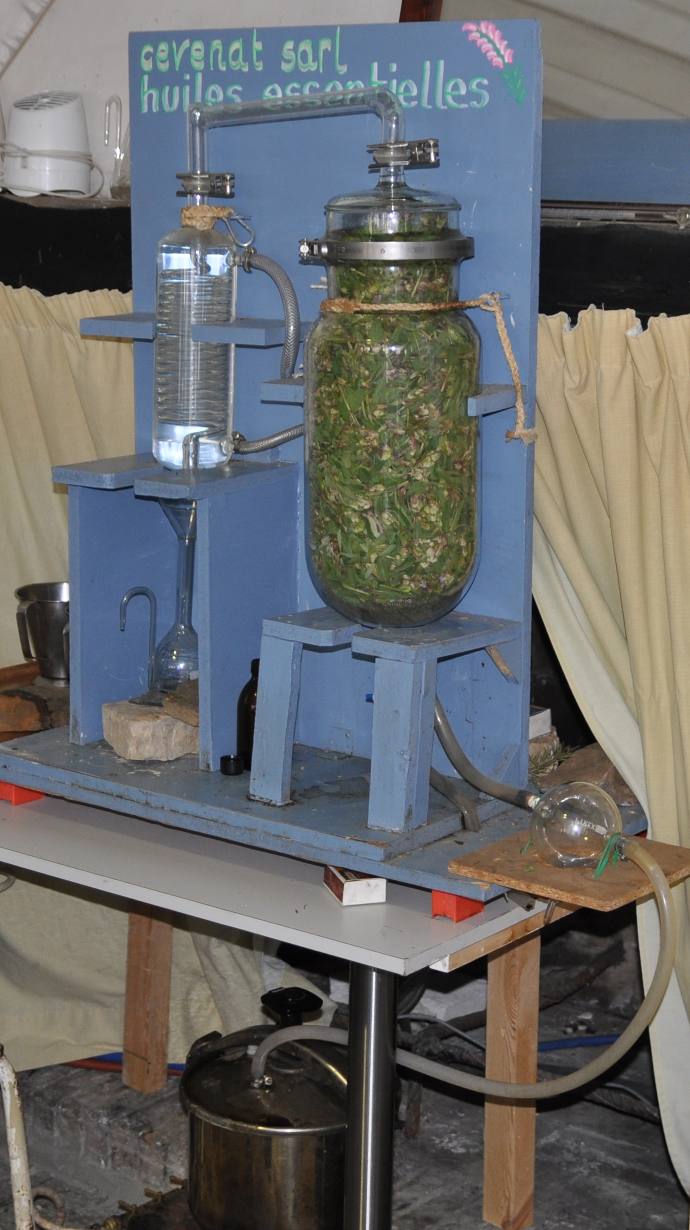
Some important details: steam
generator+glass steam regulator
(decompression the steam, filling with water, so that only dry steam
reaches the herbs, instead of steam containing to much water).
Refrigerator (serpentin), florentin (separator of essential oil and
hydrolate (hydrosol).
This is a real distillation unit, but on a very small scale, large enough to distill 10 to 30 ml during each distillation, depending on the herbs used (lavender, sage, savory), I distilled already:lavender, savory, thyme, anise seed (100 ml for approxmately 7 kg crushed seed), lovage fresh, immortelle, sage, douglas fir, juniper, tagetes and more.
This is a real distillation unit, but on a very small scale, large enough to distill 10 to 30 ml during each distillation, depending on the herbs used (lavender, sage, savory), I distilled already:lavender, savory, thyme, anise seed (100 ml for approxmately 7 kg crushed seed), lovage fresh, immortelle, sage, douglas fir, juniper, tagetes and more.
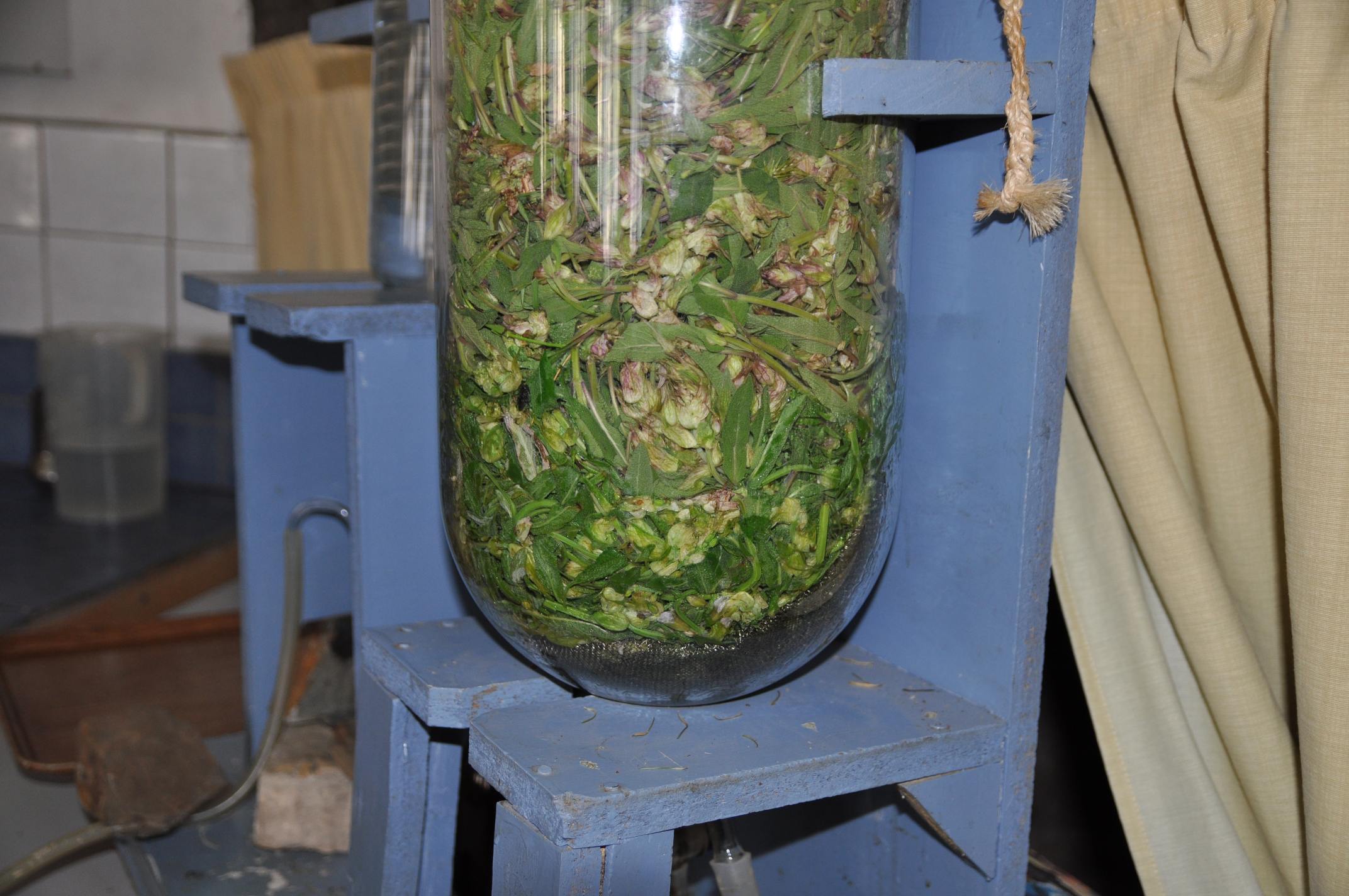
I'm adding a "grille" to prevent parts of herbs to obstruct the tab to be obstructed.
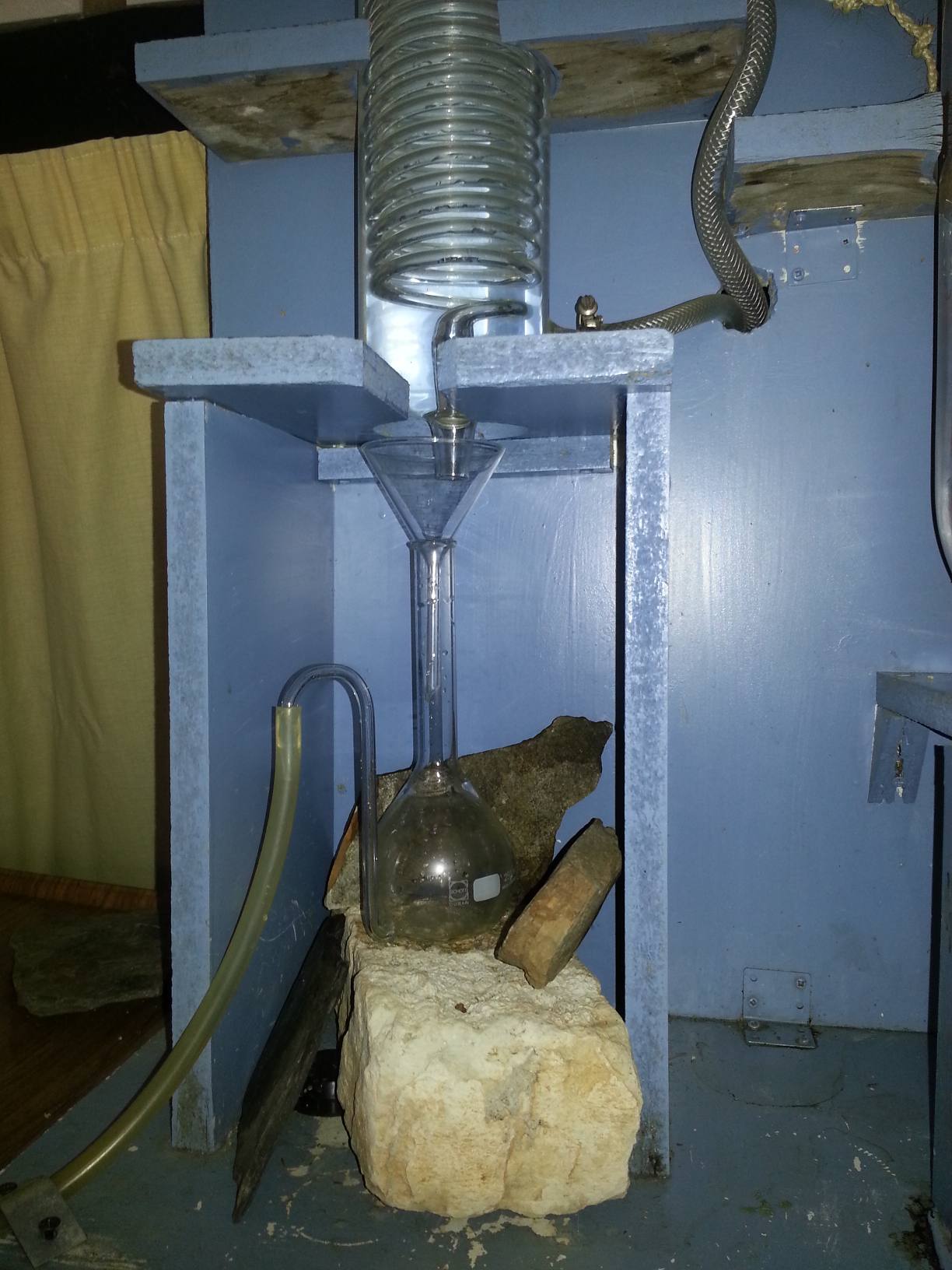
Details of the florentin, I usually add a tube towards a container of 6 liter, for instance distilling lavender takes 1 h 30 miutes, giving 3 liters of hydrolates.
I added some stones to keep everything in balance, since I added a tube towards a 6 liter hydrolate/sol container.
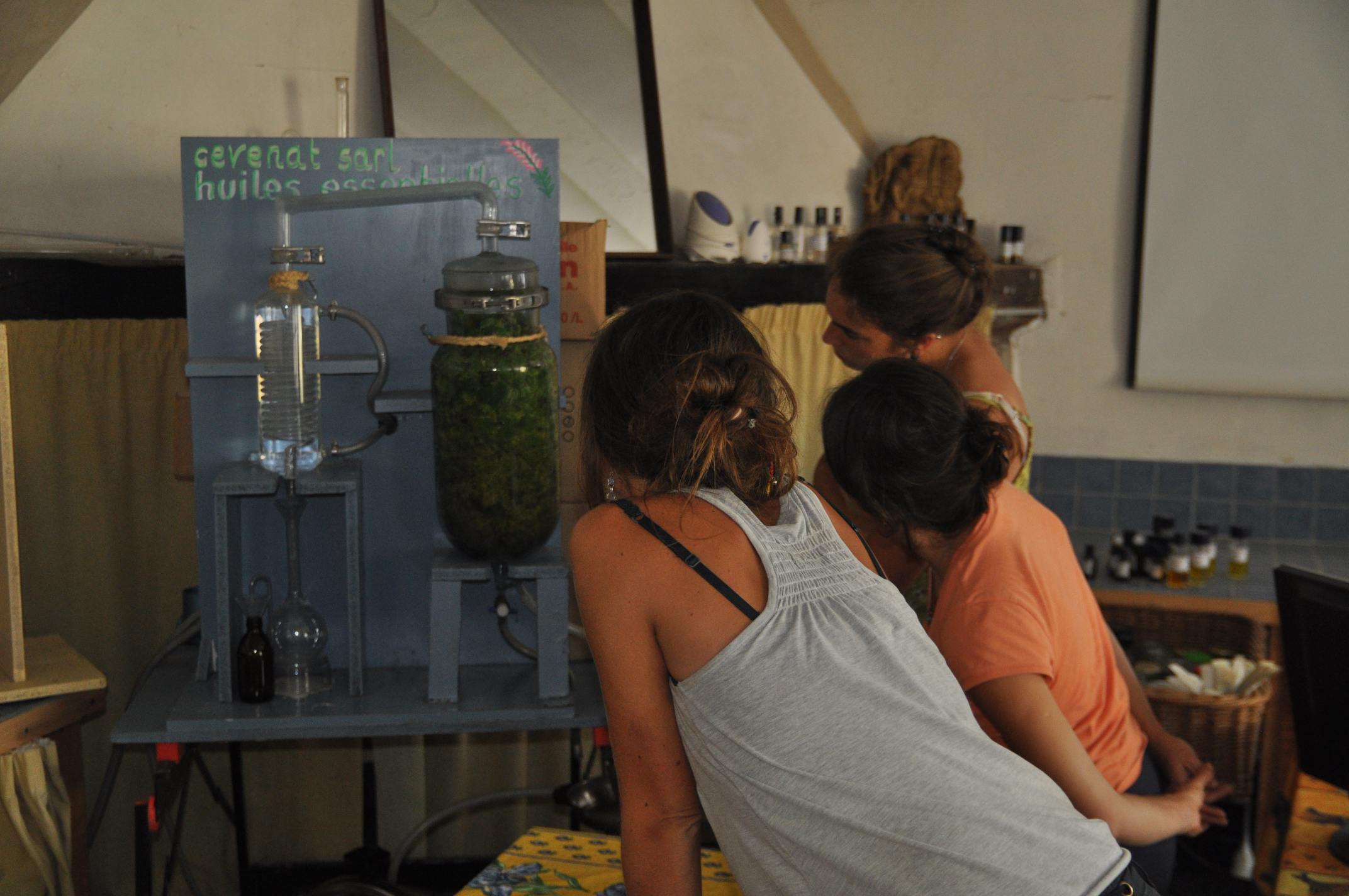

Detail of florentin during distillation, I'm taking the first drop, before adding the tube.
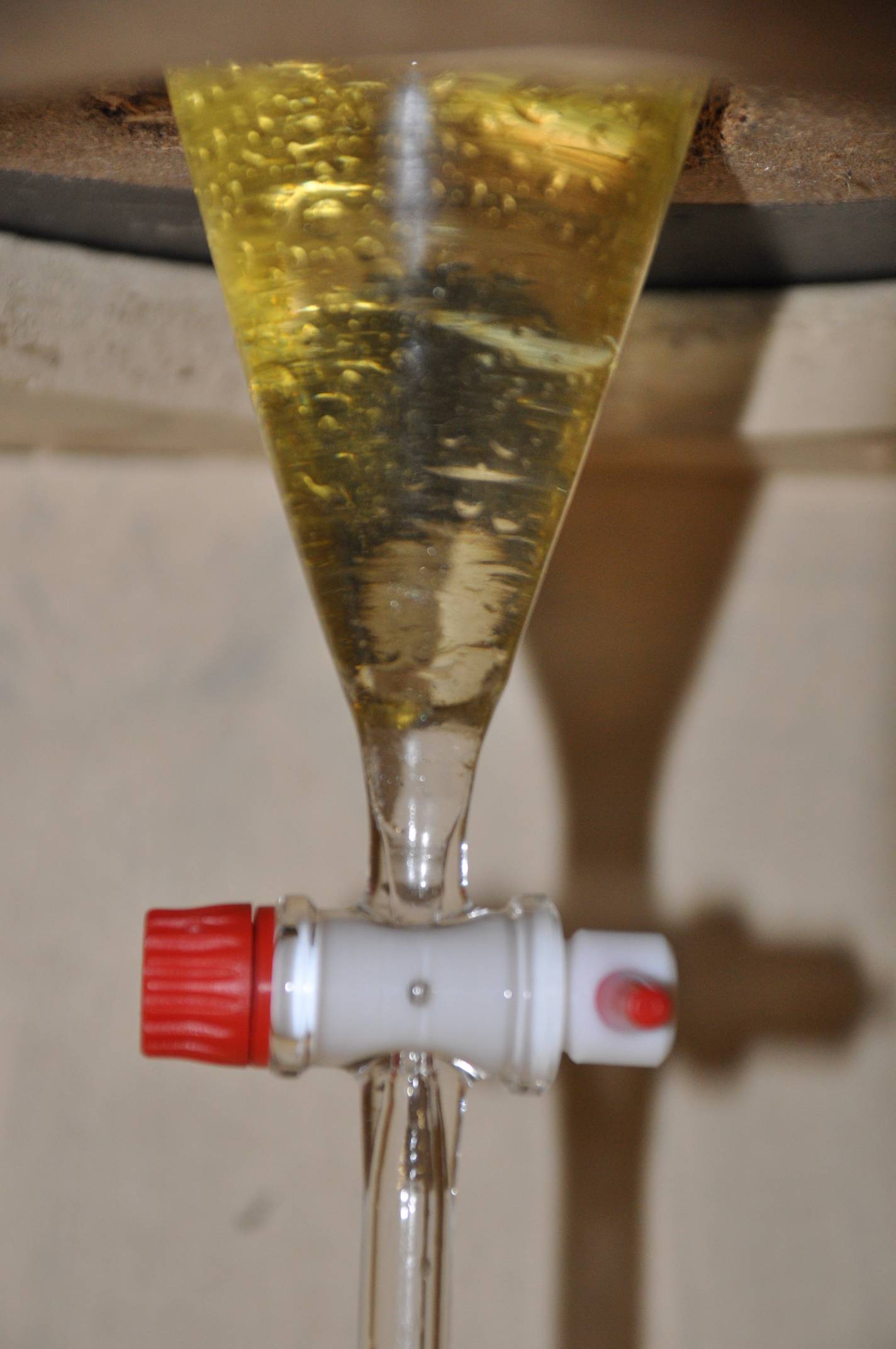
After distillation the oil concentrated in the florentin is concentrated in the separator. I wait until the water is separated and fallen to the bottom,, then I leave the water
out of the separator (back to my florentin, so that I can add this water+some drops of the essential oil back in my hydrolate container).
The result is pure essential oil without traces of water!
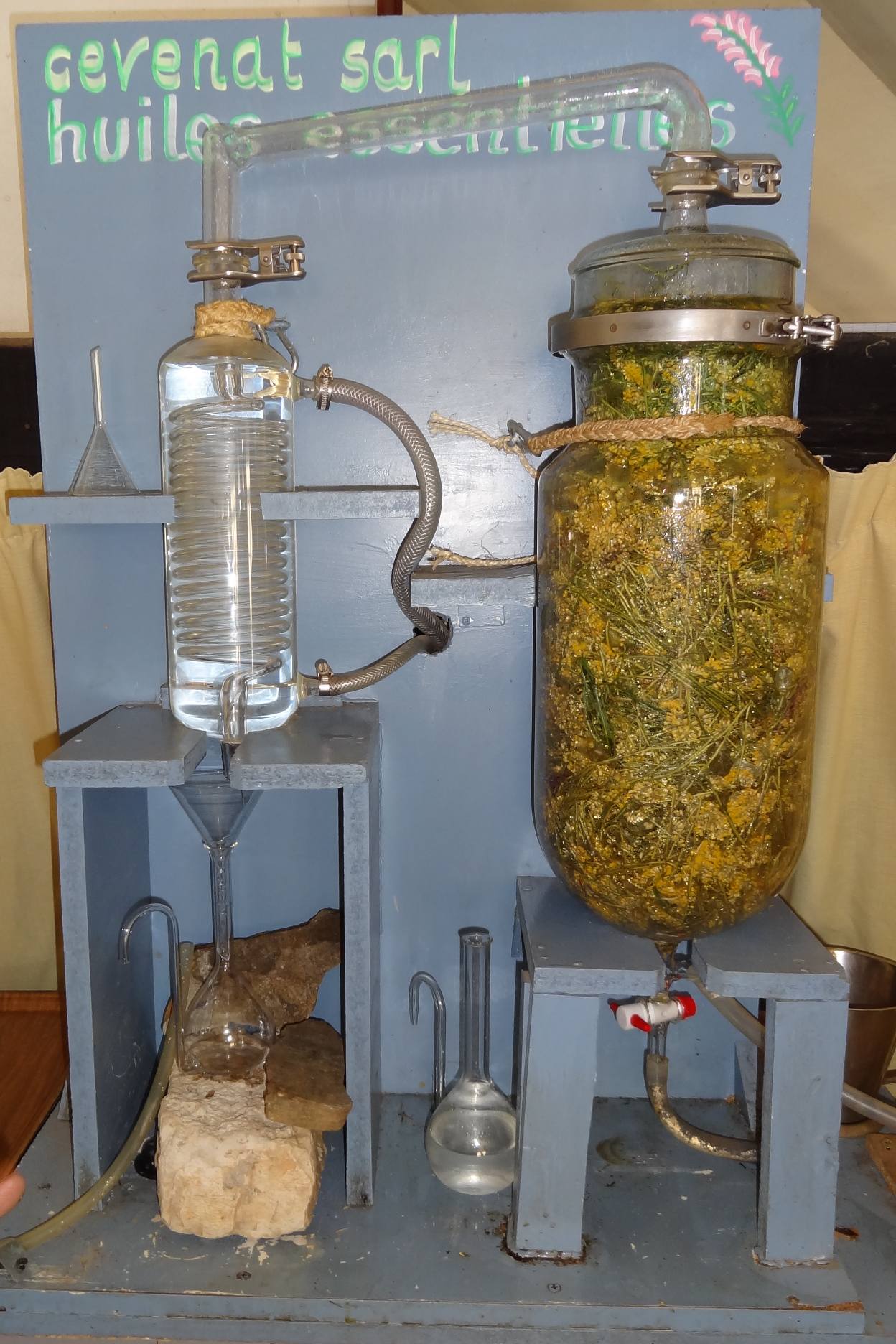
Image at the end of a immortelle (helichrysum italicum) distillation.
Michel Vanhove
Last updated: 4 march 2013